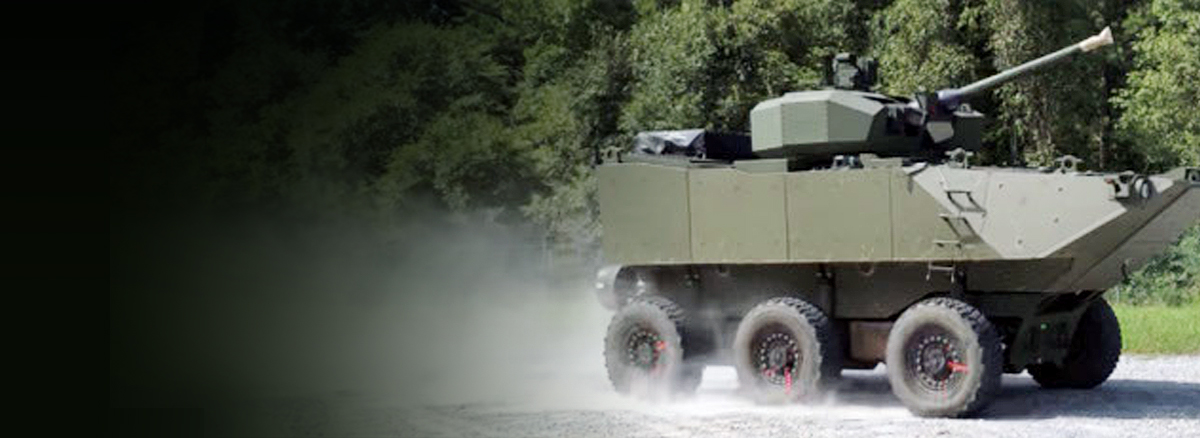
Demonstration Vehicle Highlights Next-Generation Technology
SAIC’s support to the Office of Naval Research highlights how quickly technology can get to the end-user

Systems Engineer Director
The introduction of unmanned systems, powered by artificial intelligence and machine learning technologies, has undoubtedly and permanently altered the defense landscape and presents new battlespace challenges. In deterring evolving threats around the globe and empowering warfighters with the latest innovations, military leaders are investing in revolutionary technology to meet the needs of the future force.
As part of this modernization effort, the Office of Naval Research (ONR) contracted with SAIC to develop a next-generation Advanced Reconnaissance Vehicle (ARV) technology demonstrator. The ARV tests and evaluates cutting-edge reconnaissance capabilities that are integrated into a transformational hybrid vehicle architecture.
Crucial components
The technology demonstration vehicle, formally called Swamp Fox, enables transformation. It introduces an entirely new dimension to traditional vehicle configurations and operation by combining a hybrid powertrain with cutting-edge battlefield management, integrated combat and survivability systems and the ability to quickly retrofit and reconfigure for various mission requirements.
SAIC is confident in Swamp Fox’s ability to transform future missions and drive military success. This confidence is rooted in the demonstrator completing six months of full systems-level testing in marine and land environments. We believe that this is a testament to the survivability of the vehicle and the readiness of the architecture for an operational environment.
The ARV's design substantially enhances operational stealth and mission longevity, as it enables silent mobility and multiplies silent watch and amphibious capabilities. To promote situational awareness, the system incorporates organic sensors and unmanned aerial assets, including cameras with a laser warning receiver that is augmented by sonar capabilities for marine operations. A tethered unmanned aircraft system contributes to surveillance and communications.
Incorporating innovation
In recent DOD guidance, the military services have made it a mission-essential task to field hybrid tactical and support vehicles that not only account for current and expected battlefield conditions but also incorporate capabilities to effectively field advanced technologies like lasers and high-energy demand systems. Said General David Berger, commandant of the U.S. Marine Corps and Force Design 2030, "A return to our historic role in the maritime littoral will also demand greater integration with the Navy and a reaffirmation of that strategic partnership. As a consequence, we must transform our traditional models for organizing, training, and equipping the force to meet new desired ends, and do so in full partnership with the Navy.”
In response to this need, ONR selected SAIC to develop an “at-the-edge” amphibious tactical vehicle technology demonstrator to assess state-of-the-art concepts and evaluate the potential capability and performance of advanced technologies and future systems.
The SAIC ARV technology demonstrator differs from traditional wheeled amphibious vehicles in that it integrates a hybrid drive, an integrated battle management system, enhanced vision technologies for situational awareness and target tracking and engagement capabilities.
Further, the demonstrator is configurable to reconnaissance and tactical constructs, serving as a centralized operating system to coordinate various unmanned systems, which are integrated into the design. Overall, the electronics package delivers control of more than 20 subsystems through a modern open systems architecture (MOSA) command-and-control system to create a user-centric battlefield management picture.
Introducing a centralized system that increases battlefield awareness allows for safer and more successful missions. Of additional benefit, the demonstrator’s construction uses a combination of state-of-the-art materials to produce an ultra-lightweight product with unrivaled resistance to the elements. The ARV has tested very well in the sea and land environments where it would operate.
Testing for the Swamp Fox remains in progress at Nevada Automotive Test Center, with the system being a contender to replace the LAV.
,


